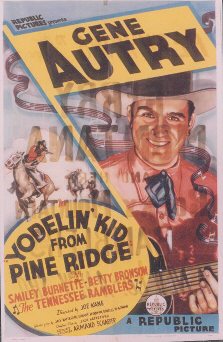A bleed-through occurs when writing (particularly
markers), other marks or stains that are on the back of the poster are absorbed
into the paper and are then seen on the front.
A see-through occurs when tape, marks or stains,
mostly writing on the back side of the poster, particularly with a black grease
pencil, can be "seen" on the front of the poster but has not been absorbed
into the paper.

A see-through can generally only be seen if
the poster is held up to the light, but a bleed-through can be seen on the
front in any light or position.
The location, size and prominence of the bleed-through
as seen on the front will determine how much value the poster loses. If the
bleed-through occurs on the border, the value of the poster in not affected
as much as if it occurs on the artwork.
CAUSES
Some bleed-throughs and see-throughs occur
because theatre managers used the backside of posters as "bulletin boards."
They placed posters in the windows of the theatres and used the back side
of the poster (the side which was seen from the inside of the theatre) to
write information such as coming attractions and show times, or to tape other
pictures or notes on the back of the poster. In order for the writing to be
visible from a distance, heavy markers were used thus creating either a bleed-through
or a see-through blemish.
Some bleed-throughs and see-throughs are the
result of using different types of tape to repair holes or tears in the poster.
Some adhesive tapes are very acidic, and the acid will eventually eat through
the poster. Less acidic tapes may not actually bleed through the paper, but
can create see-throughs.
If bleed-throughs are the result of an alcohol-based
marker (such as a 'Magic Marker'), the mark is absorbed into the color fiber
of the poster. The only way to correct this type of bleed-through is to remove
the mark through a controlled bleaching process, and then the color readded
to the pigment of the area of the poster where the original color was bleached
out. Only a professional restorer should do this.
Tape can sometimes be removed through a continuous
controlled washing and flushing process. A professional, too, should only
attempt this.
Since see-throughs can only be seen when there
is light behind the poster, to eliminate the 'shadow' effect of a see-through,
simply frame the poster and eliminate the light source.





